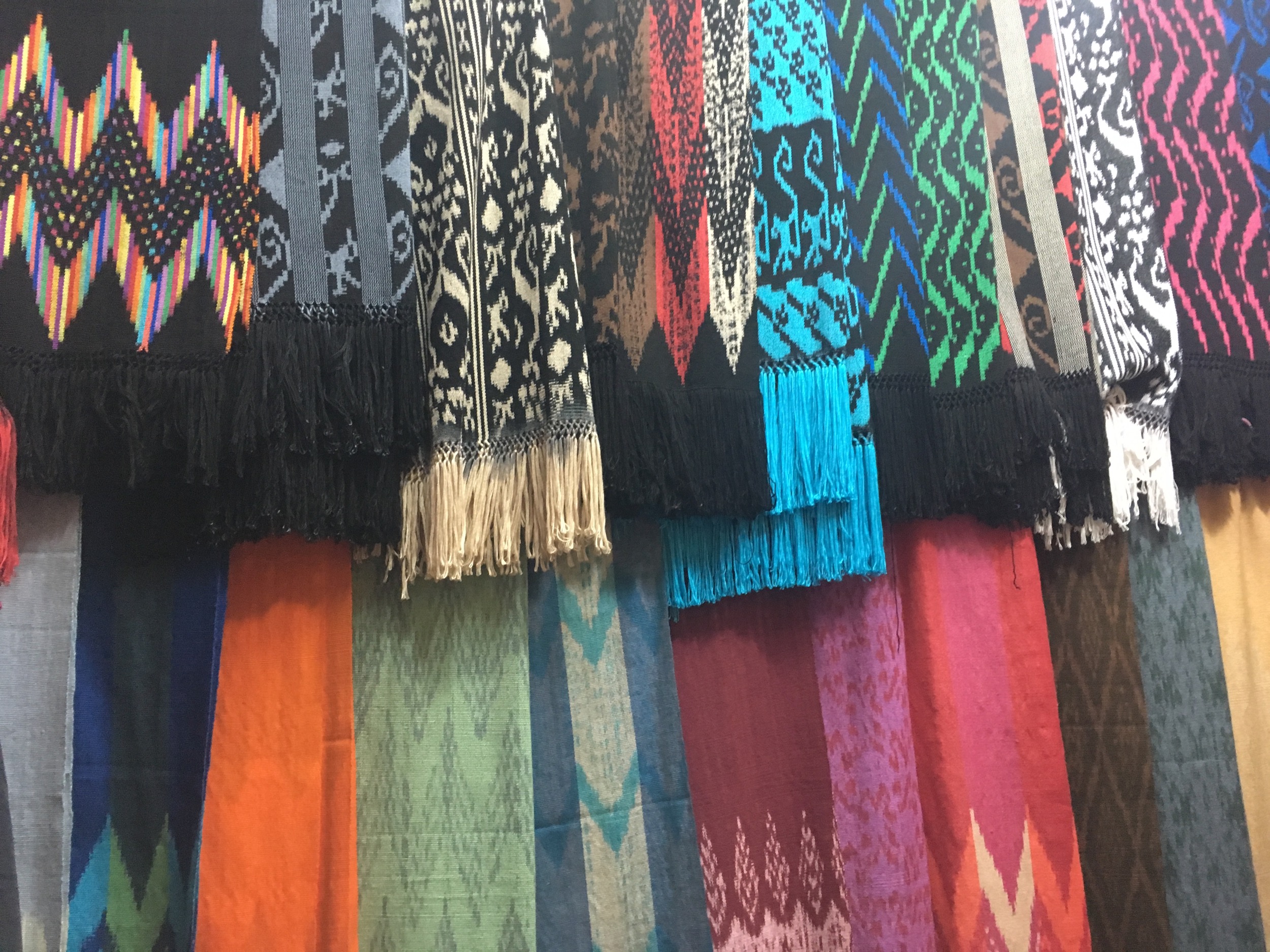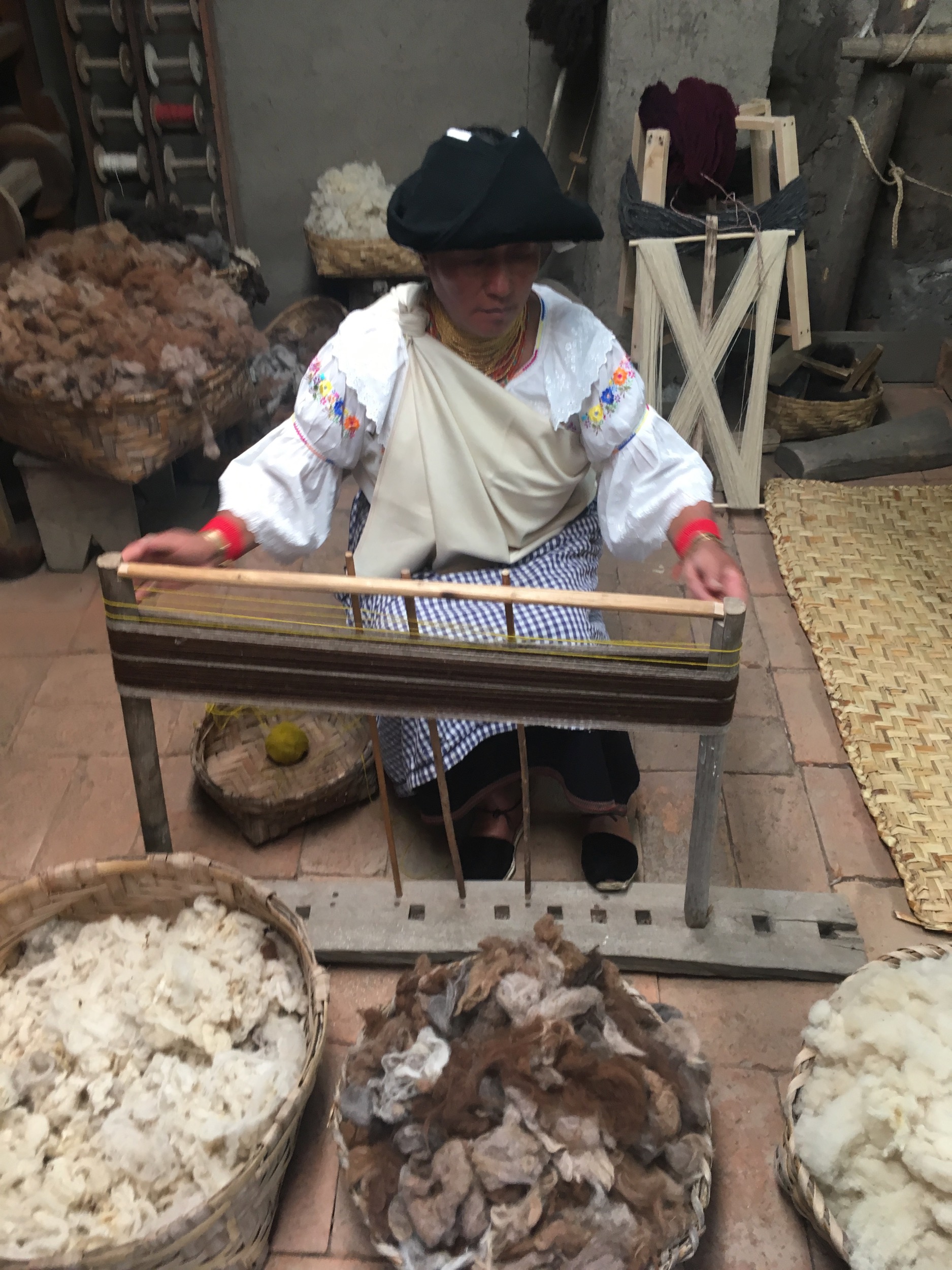Textiles and travel: Ecuador
I’m interested in how the landscape informs textiles around the world. Textile are ephemeral compared to other handmade items like metal and stonework, but they record a distinct impression of the natural world as well as the local relationship to it. Materials chosen, the techniques used to transform fiber into fabric, the designs captured in the cloth, together capture ecological information and cultural attitudes.
Fishing ropes I found on the beach
Ecuador was a textile adventure, starting with the colored ropes I found on the beach near a fishing town. Here are some visual notes. The skill of artisans in Ecuador is mind-blowing. Take the panama hat, it’s from Ecuador as it turns out. These hats and baskets are woven of toquilla straw that comes from a palm-like plant. The fibers can be made into very thin strips, and the weaving of one hat can take weeks. They are an important part of the traditional dress of the chola cuencana. All over Ecuador, indigenous and mestizo women wear distinctive outfits that relate to their region and heritage. Men wear them too, but not every day as women do. It made me think of the importance of women and textiles as culture keepers.
I visited a couple of ikat studios and a backstrap weaving studio. Ikat is a method of creating pattern by tying and dyeing the warp before weaving begins that I learned about at La Casa de la Makana in Gualaceo. The process of washing, carding, spinning, dyeing, and weaving I experienced at Tahuantinsuyo Weaving Workshop north of Otavalo.

















